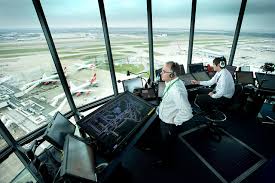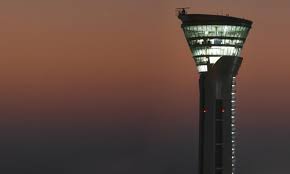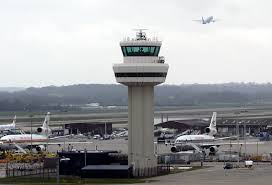Air Traffic Control (ATC)


ATC OPERATIONS:
The primary objectives that all Air Traffic Controllers achieve are to:
• prevent collisions between aircraft;
• prevent collisions between aircraft on the manoeuvring area and obstructions on that area;
• expedite and maintain an orderly flow of air traffic;
• provide advice and information useful for the safe and efficient conduct of flights;
• notify appropriate organisations regarding aircraft in need of search and rescue aid, and assist such organisations as required.
• prevent collisions between aircraft;
• prevent collisions between aircraft on the manoeuvring area and obstructions on that area;
• expedite and maintain an orderly flow of air traffic;
• provide advice and information useful for the safe and efficient conduct of flights;
• notify appropriate organisations regarding aircraft in need of search and rescue aid, and assist such organisations as required.
Air Traffic Control is divided into two main types of operation: visual control operations provided at controlled aerodromes by Tower controllers, and instrument operations provided by Radar, Procedural and Oceanic controllers. Instrument operations are not necessarily based on or near aerodromes (e.g. all radar control over New Zealand is carried out from a single location, in Christchurch, except Oceanic which is based in Auckland)
.
Tower controls the landing, take-off and runway operations of aircraft, ensuring the safety of aircraft on the aerodrome, and in the surrounding control zone. Most activity in the tower is done visually, with assistance provided by such tools as: radar, VDF equipment and (in selected areas) MLAT
In some regions of New Zealand, approach control is also conducted from the control tower using procedural approach methods . All of these areas lack reliable radar coverage at low altitudes, due to terrain and proximity from SSR (secondary surveillance radar) sites, so therefore responsibility for approach control is
assigned to the Tower
.
Radar controllers separate aircraft within controlled airspace, outside the towers’ designated areas of responsibility. In New Zealand, Radar controllers may either be Area Controllers or Approach Controllers.
Area Controllers: control aircraft within upper airspace, keeping them separated while en route to their destination.
Approach Controllers: use radar to separate aircraft arriving and departing primarily within the major terminal control areas (Auckland, Wellington and Christchurch).
Oceanic air traffic control is carried out utilising satellites (GPS, or Global Positioning Systems). Air traffic operations are similar to radar control except that Oceanic control vectors aircraft between international airspace boundaries. Oceanic controllers transfer control of aircraft to and from Radar controllers.
§ Call Us Now -7200081121 / 7200023412 / 7200081330/ 7200015600
§ Email your queries to hr@worldptc.com or admin@worldptc.com
§ Visit website - www.worldptc.com
§ Walk in from Monday to Friday 0900am to 0500pm in the address mentioned below.
§ Address: Chennai - #16/29 1st Main Road, New Colony, Chrompet, Chennai-600044
§ Bangalore – No 410, 2nd floor. 5th A Main, 2nd Block. HRBR layout (Near kalian nagar bus stop) Kalyan nagar, Bangalore 560043. Contact- 8050005079.
§ Email your queries to hr@worldptc.com or admin@worldptc.com
§ Visit website - www.worldptc.com
§ Walk in from Monday to Friday 0900am to 0500pm in the address mentioned below.
§ Address: Chennai - #16/29 1st Main Road, New Colony, Chrompet, Chennai-600044
§ Bangalore – No 410, 2nd floor. 5th A Main, 2nd Block. HRBR layout (Near kalian nagar bus stop) Kalyan nagar, Bangalore 560043. Contact- 8050005079.
- You can watch us on- https://www.youtube.com/watch?v=Xwmmih24k5k

No comments:
Post a Comment